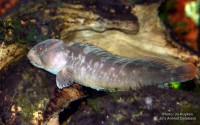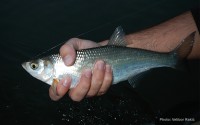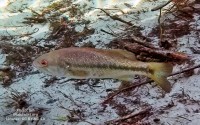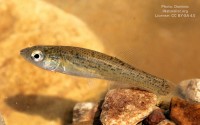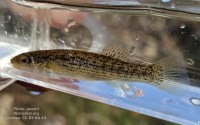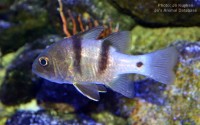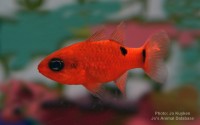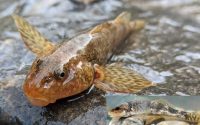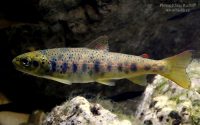Blackear wrasse
(Halichoeres poeyi)
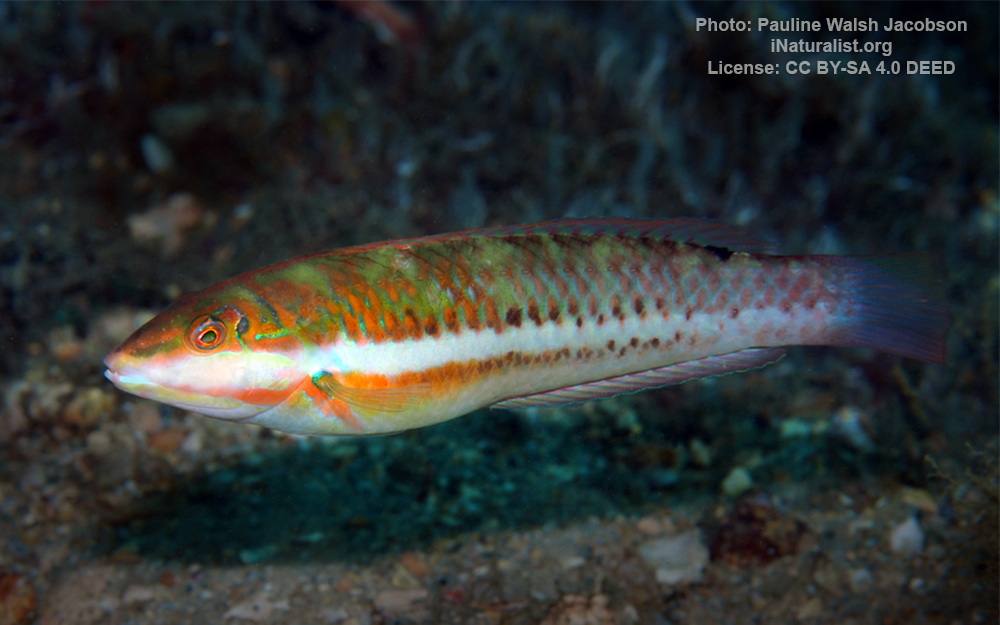
Image source: Pauline Walsh Jacobson | inaturalist.org
Classification
General data
The blackear wrasse has a relatively long, thin body, a large eye, and a pointed snout with a terminal mouth which has protruding canine-like teeth. The pectoral fins extend to the vent. It has wide pink bands and a narrow blue stripe on the head and tail and there is a dark spot behind the eye which gives it the common name blackear wrasse. The background color of the head and body is olive with pinkish-red lined scales.
The margin of the dorsal fin is blue and orange and the caudal fin is dull yellow with diagonally converging blue and rose lines. The males and females are similarly patterned but males are larger than females.
There is another black spot on the spine near the origin of the dorsal fin.
The dorsal fin has 9 spines and 11 soft rays; the anal fin has 3 spines and 12 soft rays.
The maximum size of H. poeyi is around 20 cm (7.9 in) in length.
The blackear wrasse is found in the western Atlantic Ocean, from southern Florida and the Bahamas to Santa Catarina in southern Brazil.


